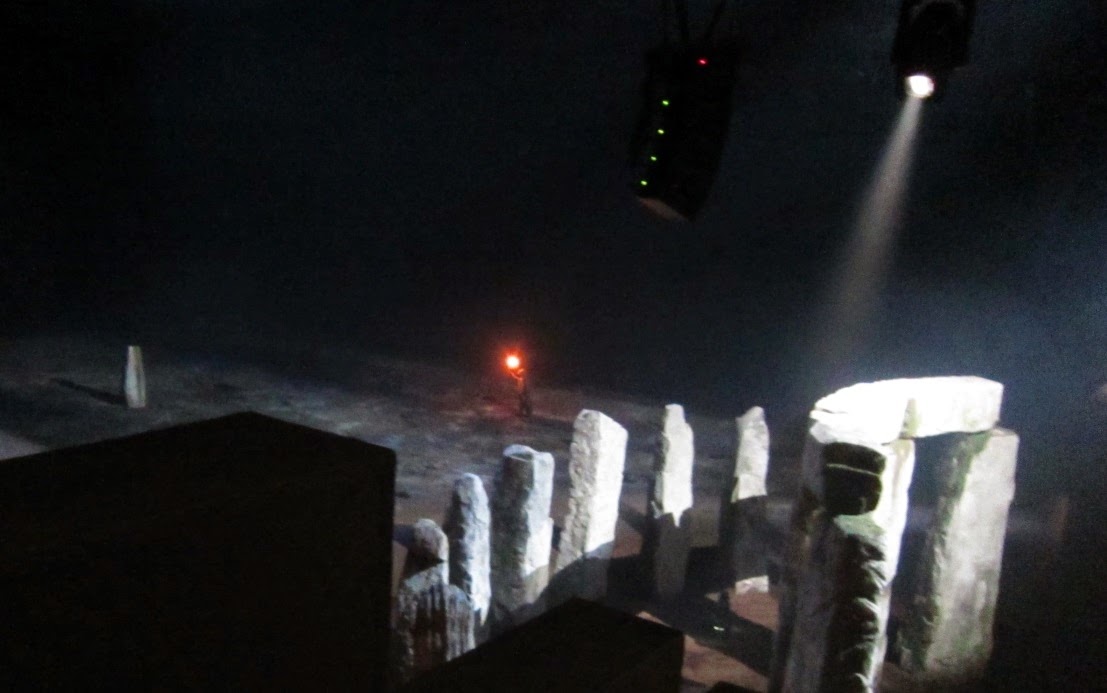The under-advertised film Words and Pictures boasts two fine actors
on its poster: Clive Owen and Juliette
Binoche. It looked vaguely like a love story between two not-young people,
a second-time-around sort of love story.
 |
| Juliette Binoche as artist/teacher Delsanto. (Photo Credit Roadside Attractions) |
Both characters are artists and teachers: she a painter teaching fine
arts (Honors class), he a writer teaching English (ditto). They share the same
very bright high school students. They
share one more thing: Each of them is
broken. Jack Marcus (Mr. Owen) and Dina
Delsanto (Ms. Binoche) spar over the strengths of their art forms – which
becomes a “war” between words and pictures.
He needs a war because he is broken by his disease, alcoholism, which
is an immediate threat to his job.
Her disease is rheumatoid arthritis, which keeps her from painting as
she used to. She must recreate herself
because her body has betrayed her.
Words and Pictures holds no surprises. Any film with an
alcoholic as a main character requires that he hit bottom, which he does. The
road to true love never did run smooth, and this one had sinkholes. Still we have
confidence that the sparks would not be put out by common sense or guilt or
anything else.
While I am not a poet, it seemed odd to me that a literature teacher
who chastised his students for researching online instead of using books (which
have the advantage of turning the pages, so students can come across odd bits
of information as they search through the books to fulfill the assignment)
would stare at a computer screen attempting to write a poem. I should think
he’d prefer pen or pencil on paper for some tactile connection. (Poets out
there, feel free to tell me the medium is irrelevant.) A man staring at a
computer screen is no more interesting — rather, less — than a man scribbling
by hand, reading, and crumpling the paper.
Yes, it’s a clichéd image, but Words and Pictures is a cliché
itself.
Since Dina’s problem is physical, we can be sure she has a friend to
look after her. We meet Dina’s
protective sister Sabine, well played by Janet
Kidder. Ms. Kidder even looked something like Ms. Binoche, if a bit harder,
which was suitable for her role. Fellow teacher Walt, who, not
surprisingly, appears to be Jack’s only friend, is warmly played by Bruce Davison. A bullied student, Emily,
as sweetly played by Valerie Tian,
goes from fragile and frightened, to crushed, to a blossoming young woman who
can help an adult – Dina – move forward.
The scenes of Dina Delsanto struggling to paint when her body could not
do what it had in the past were moving and believable. Her passion continues despite her body’s
deterioration. Dina Delsanto’s paintings
were in fact painted by Ms. Binoche, which is the most interesting part of this
movie.
I generally do not try to guess outcomes, preferring stories to unfold
themselves on their own terms and in their own time. Yet even I knew where this
one was headed, how the romance would be derailed, and pretty much how it would
be repaired. (By their students, of course.) This is a pleasant film, but it
offers no questions, merely easy answers.
Fred Schepisi’s direction improves
Gerald DiPego’s script. Mr.
Schepisi provided interesting views of Ms. Binoche working and struggling to
overcome her disability, leading step by step through the character’s changing
path. Unfortunately Mr. DePego’s script
did not afford similar opportunities for Mr. Owen’s regrettably stock character. We’ve all seen far too many scenes of people
in AA, although Jack did start off wrong:
not with his name and his addiction, but his profession, illustrating
his continuing egotism. Both director and screenwriter have a
long track record, yet this appears like an early effort of an inexperienced
writer.
Despite its good cast, these Words and Pictures just don’t tell
us a new story.
~ Molly Matera, signing off to find a better film with any of these actors.















